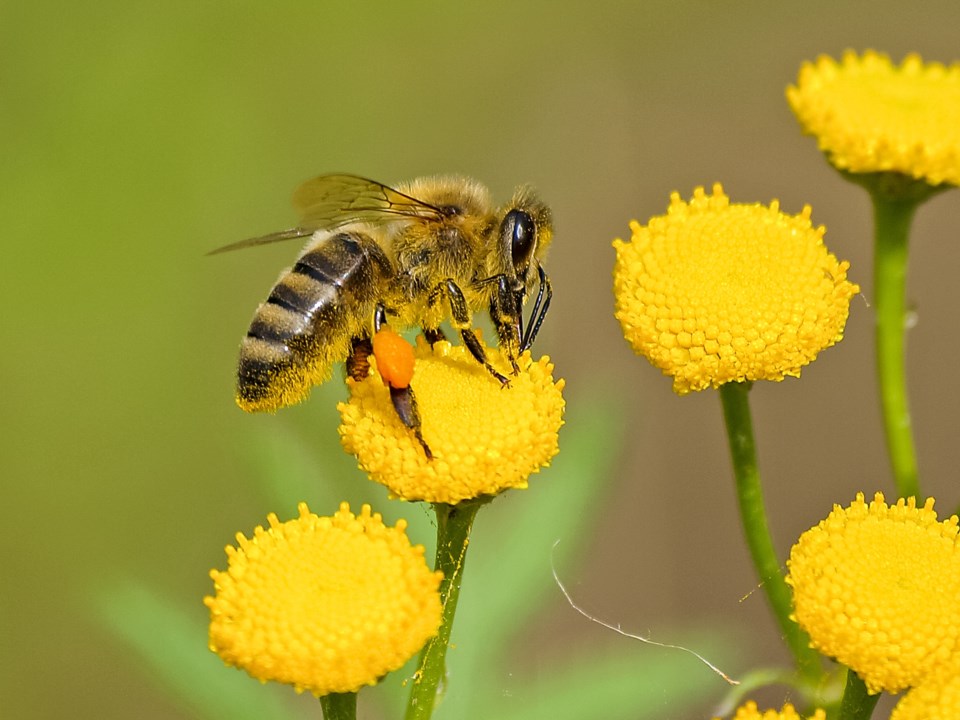BarrieToday welcomes letters to the editor at [email protected]. Please include your daytime phone number and address (for verification of authorship, not publication). The following letter is from Barrie resident Gwen Petreman on the importance of pollinators.
*************************
The more I read about the incredibly important role pollinators play in the future existence of all of us, the more concerned I become about their alarming decline all over the world.
It is hard to fathom that our health, well-being and our future existence here on Earth is dependent on tiny insignificant-looking, sometimes annoying insects, flitting from flower to flower.
Pollinators are all connected with all other species in the fragile web of life.
The value and importance of each strand may not be obvious until it is destroyed.
The extinction of one species can ripple right through the web of life and negatively impact the health and well-being of all of us.
We need pollinators as 450,000 species depend entirely on pollinators – one-third mouthful of all the food we eat, including meat.
Alfalfa eaten by cows is pollinated by leaf cutter bees.
Many of the over 850 native bee species here in Canada face extinction.
On Earth Day, 2019 the UN provided us with an alarming report – our bumblebee population had declined an astounding 89 per cent!
It turns out one of the best food sources for pollinators are native plants. Native plants are extremely adaptive as they have evolved over thousands of years to become drought and pest resistant, and readily grow in poor soil conditions.
Unfortunately, many domesticated flowers grown in our gardens have been bred for beauty and many no longer produce nectar!
Here in Ontario, we have over 270,000 km of roads with roadsides dominated by a riot of naturalized flora which turn out to incredible food sources for our pollinators.
Research has demonstrated that pollinating insects such bees, moths, beetles, wasps, ants, and butterflies all visit roadside flowers frequently.
It is estimated that pollinators provide upwards of 217 billion dollars to the world economy.
Pollinators' rights here in Ontario alone are responsible for $897 million worth of agricultural crops per year.
It is expected that all municipalities are familiar with the Growing Forward 2 Guide jointly produced by the federal and provincial governments, which describes in great detail everything required to implement “best practices” to maintain flowering roadside plants readily available to our pollinators.
Bees need evergreen trees! A concerted effort should be made to plant as many evergreens as possible in groups of three (without shade single evergreen trees will often dry out and die in sunny winter months).
Worker honey bees will go in search of resin from evergreen trees. They tear the resin from trees and mix it with the wax from the beehive. This antibiotic mixture makes the hive waterproof and the mixture will be used to entomb any invading insects.
A few years ago, Coun. Mike McCann spearheaded an initiative to make Barrie an official Bee City.
Since that time, the city has implemented a number of measures to increase food sources and safe habitats for pollinators such as reducing the number of mowing cycles per summer, increasing the number of naturalized spaces, replacing planting areas with native species, supporting the planting of native trees, restoring and enhancing the shoreline restoration, and creating an in-house native flower-enhanced seed mix.
On June 18, Barrie is hosting a Pollinator Week from June 20-26. The city will promote learning opportunities about the importance of pollinators.
When planting your garden consider adding as many native and pollinating plants as possible such a blue vervain, cup plants, ironweed, cone flowers, black-eyed susans, coreopsis, asters, borage, butterfly bush, butterfly weed, dahlias, daisies, lavender, marigolds snapdragons, and sunflowers.
Homeowners are encouraged to leave flowering dandelions on their lawns until they go into seed as they are great nectar sources for bees.
If we all do a little bit, we can accomplish a lot to help reduce the decline of our precious pollinators.
Gwen Petreman
Barrie
*************************



